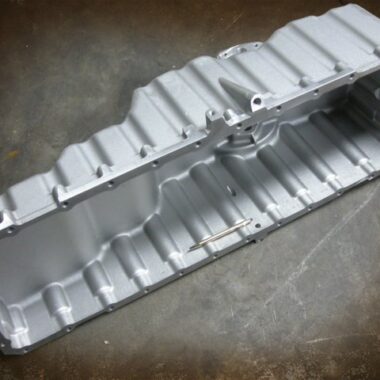Opening Quality: Aluminum Casting Techniques & Tips for Superior Outcomes
Opening Quality: Aluminum Casting Techniques & Tips for Superior Outcomes
Blog Article
Study the Globe of Aluminum Spreading: Recognizing the Different Methods
Aluminum spreading is an essential process in the production market, with various methods used to produce intricate and specific components. Recognizing the different strategies utilized in aluminum spreading can offer beneficial understandings into the capacities and limitations of each strategy. From the standard sand casting technique to the advanced die spreading process, each technique offers one-of-a-kind advantages relying on the requirements of the task. Exploring these varied methods can use a comprehensive sight of the possibilities within the globe of light weight aluminum spreading and exactly how each strategy adds to forming the modern manufacturing landscape.
Sand Casting Technique
Sand spreading, a widely-used approach in aluminum casting processes, includes developing mold and mildews made of compacted sand for pouring liquified steel. This approach is highly versatile and economical, making it a popular option for different markets. The procedure starts with the production of a pattern, typically made of wood or metal, which is then pressed into the sand to leave an impression. The sand mix, usually silica sand blended with a binder like clay, is securely loaded around the pattern to develop a mold and mildew tooth cavity. When the mold and mildew is prepared, it is safely put in a flask and molten aluminum is put right into the tooth cavity.
After the metal has cooled and strengthened, the sand mold and mildew is broken away to reveal the light weight aluminum spreading. Sand casting enables the manufacturing of intricate shapes and large components that might be expensive or hard to create using other approaches. It is likewise a sustainable method as the sand can be recycled and utilized numerous times, lowering waste in the spreading procedure.
Long-term Mold Strategy

One significant advantage of the Permanent Mold And Mildew Strategy is the boosted dimensional precision it uses. The steel mold enables for tighter tolerances and finer information in the last light weight aluminum castings compared to sand casting approaches. This accuracy makes it a favored option for applications where tight dimensional control is vital, such as in the automobile and aerospace industries.

Die Casting Process

Financial Investment Casting Technique
Using a precision casting method, Financial investment Casting Strategy entails producing elaborate aluminum components by putting liquified metal into a ceramic mold and mildew. This procedure, also referred to as lost-wax spreading, starts with the development of a wax pattern of the desired component. This wax pattern is after that coated with a ceramic product to develop a covering. When the ceramic shell is set, it is heated up to remove the wax, leaving a hollow ceramic mold and mildew.
Investment spreading is generally used for producing parts in industries where tight tolerances and complex layouts are required, such as aerospace, automotive, and medical devices. The convenience and accuracy of the Investment Casting Method make it a useful strategy in the globe of light weight aluminum casting.
Lost Foam Casting Method
Having checked out the complex accuracy of Financial investment Casting Strategy, the emphasis currently changes to the innovative method of Lost Foam Casting in aluminum component manufacturing. Lost Foam Casting, also called evaporative pattern casting, is a modern technique where a foam pattern of the desired part is created and after that covered with a refractory product. The layered foam pattern is after that hidden in sand, and molten light weight aluminum is poured right into the mold and mildew. As the steel loads the mold and mildew, the foam vaporizes because of the warm, leaving a clean cavity in the shape of the desired component.
One of the main benefits of Lost Foam Casting is its ability to generate complicated shapes with intricate information, commonly in a single item without the requirement for additional machining. This approach is likewise known for its high dimensional precision and smooth surface coating. Furthermore, Lost Foam Casting is a cost-efficient process as it reduces the demand for cores and permits the production of light-weight components. Regardless of its advantages, Lost Foam Spreading needs mindful control of the casting process to make sure and prevent flaws quality parts.
Verdict
Finally, aluminum casting uses a variety of methods such as sand casting, irreversible mold and mildew technique, die spreading, financial investment casting, and lost foam casting. Each technique has its very own benefits and applications, making aluminum casting a versatile and commonly utilized procedure in numerous industries. Comprehending the distinctions in between these approaches is crucial in choosing the most appropriate spreading strategy for details manufacturing requirements.
Sand casting, a widely-used method in aluminum casting processes, involves creating molds made of compacted sand for pouring molten metal. aluminum casting.The Permanent Mold Technique, like sand spreading, is an additional widespread approach used in find light weight aluminum spreading procedures, using unique benefits in terms of mold reusability and dimensional accuracy. The metal mold and mildew permits for tighter resistances and better details in the final aluminum spreadings contrasted to sand spreading methods. The two main kinds of die spreading are chilly chamber die casting and hot chamber pass away spreading, each appropriate for different types of light weight aluminum alloys.In verdict, light weight aluminum casting offers a selection of approaches such as sand spreading, long-term mold and mildew strategy, pass away casting, investment spreading, and lost foam casting
Report this page